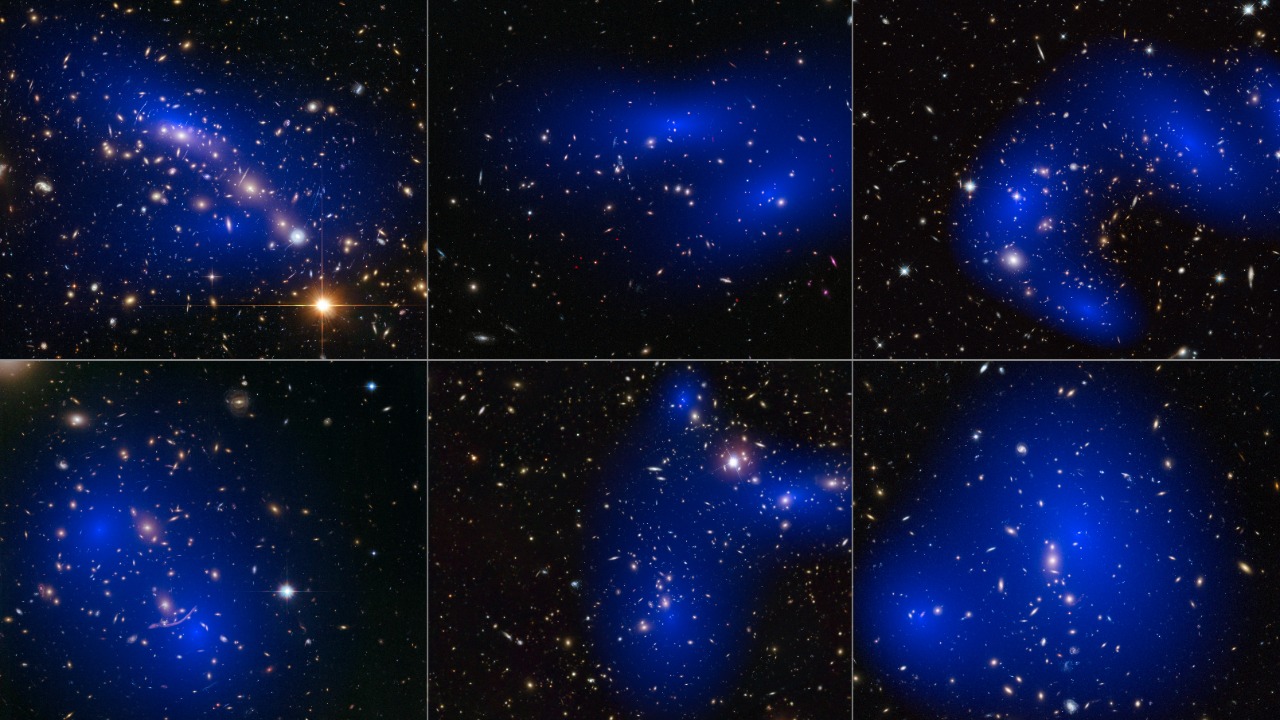
A groundbreaking study from the University of York has proposed a revolutionary concept: dark matter, the elusive substance that makes up about 85% of the universe’s mass, might leave a colorful ‘fingerprint’ on light. This discovery suggests that light can reveal dark matter’s influence in ways previously undetected, potentially tinting our view of the universe and exposing hidden structures through subtle color shifts.
The Mystery of Dark Matter
Dark matter, despite being a fundamental component of the universe, remains largely invisible and undetectable. It interacts gravitationally but not electromagnetically, making it a challenge for scientists to identify directly. Traditional methods, such as particle colliders, have been unsuccessful in detecting dark matter despite decades of research. However, indirect evidence from galaxy rotations and the cosmic microwave background has hinted at its existence and influence.
The inability to directly observe dark matter has led to a reliance on these indirect methods, which, while informative, leave many questions unanswered. The recent research from the University of York, however, suggests a novel approach to detecting dark matter’s influence, potentially revolutionizing our understanding of this elusive substance.
A Colorful Fingerprint Emerges
The core finding of the study is that dark matter might imprint a faint colour signature on light passing through cosmic structures. This “fingerprint” manifests as subtle color variations in light spectra, potentially allowing astronomers to map dark matter distributions without direct interaction. As one account vividly describes, researchers “saw a color in the dark”, emphasizing the breakthrough in using light to expose hidden dark matter.
This discovery could change our understanding of the universe and how we observe it. The potential to detect dark matter’s influence through light could open up new avenues for research and exploration, providing a new tool for scientists in their quest to unravel the mysteries of the universe.
Scientific Mechanism Behind the Tint
The theoretical process behind this discovery is that dark matter’s gravitational lensing subtly alters photon paths, leading to chromatic distortions in observed light. This effect creates a “colorful ‘fingerprint’ on light,” distinguishing dark matter’s influence from ordinary matter through specific wavelength shifts. Simulations and models predicting these color marks have been developed, providing a theoretical basis for this groundbreaking discovery.
According to an analysis published on October 21, 2025, this chromatic distortion could be a key to unlocking the secrets of dark matter. The colorful fingerprint left by dark matter on light could provide a new way to detect and study this elusive substance, potentially revolutionizing our understanding of the universe.
Implications for Cosmic Observations
Detecting this tint could refine maps of the universe’s large-scale structure, improving our understanding of galaxy formation influenced by dark matter. This discovery could also have practical applications, with telescopes like the James Webb Space Telescope potentially being used to spot these signatures in distant galaxies. This breakthrough could bridge the gap between dark matter theory and observable phenomena, changing everything about how we study the universe.
As highlighted in the October 15, 2025, discovery narrative, this new method of detecting dark matter’s influence could revolutionize our understanding of the universe, providing a new tool for scientists in their quest to unravel its mysteries.
The Role of Recent Research
The team at the University of York has made significant contributions to this field of study. Their innovative analysis, detailed in their October 13, 2025, study, suggests that dark matter leaves a ‘fingerprint’ on light, potentially revolutionizing our understanding of this elusive substance.
Interdisciplinary efforts combining astrophysics and optics have been crucial in this discovery. As seen in the October 26, 2025, report, the potential of dark matter to color our view of the universe is a testament to the power of collaborative research and innovative thinking.
Challenges and Future Directions
While this discovery is groundbreaking, there are still challenges to overcome. Distinguishing the faint colour mark from interstellar dust or other light pollutions could prove difficult. However, upcoming experiments or surveys designed to verify the tint effect could help overcome these hurdles.
Future research will likely focus on verifying and refining this discovery. If confirmed, it could have broader impacts, such as revising models of the universe’s expansion. However, empirical validation is still needed. As we await further research, this discovery offers a tantalizing glimpse into the potential future of cosmic observations and our understanding of the universe.
More from MorningOverview